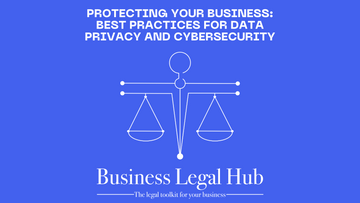In today's digital age, data is the lifeblood of businesses. From customer information to financial records, safeguarding sensitive data is crucial to maintaining trust, reputation, and compliance with regulations like GDPR and CCPA. Here are some essential best practices for data privacy and cybersecurity:
- Conduct a Risk Assessment
The first step is to identify potential vulnerabilities and prioritize your security efforts. A thorough risk assessment can help you understand the specific threats your business faces and determine the appropriate countermeasures.
- Implement Strong Access Controls
Restrict access to sensitive data on a need-to-know basis. Use strong, unique passwords and enforce multi-factor authentication (MFA) for added security. Consider implementing role-based access control (RBAC) to assign appropriate permissions to employees.
- Encrypt Data
Encrypting data both at rest and in transit can protect it from unauthorized access even if it's compromised. Use encryption algorithms that are widely accepted and considered secure.
- Regularly Update Software and Systems
Software vulnerabilities are a common attack vector. Keep your operating systems, applications, and security software up-to-date with the latest patches and updates.
- Educate Employees
Employees play a vital role in data security. Provide regular training on cybersecurity best practices, including how to recognize and avoid phishing attempts, social engineering attacks, and other common threats.
- Implement a Data Breach Response Plan
A well-crafted data breach response plan can help you minimize the damage and comply with legal requirements in case of a security incident. This plan should outline steps for containing the breach, notifying affected individuals, and taking corrective actions.
- Back Up Your Data
Regularly back up your data to a secure location to protect against data loss due to hardware failures, natural disasters, or cyberattacks. Ensure that backups are stored off-site and tested periodically.
- Monitor Network Activity
Continuously monitor your network for unusual activity that may indicate a security breach. Use intrusion detection and prevention systems (IDPS) to detect and block malicious attacks.
- Comply with Regulations
Stay informed about relevant data privacy and cybersecurity regulations, such as GDPR, CCPA, and HIPAA. Ensure that your business is compliant with these laws to avoid hefty fines and penalties.
By following these best practices, you can significantly reduce the risk of data breaches and protect your business's reputation and bottom line. Remember, data security is an ongoing process that requires constant vigilance and adaptation to emerging threats.





